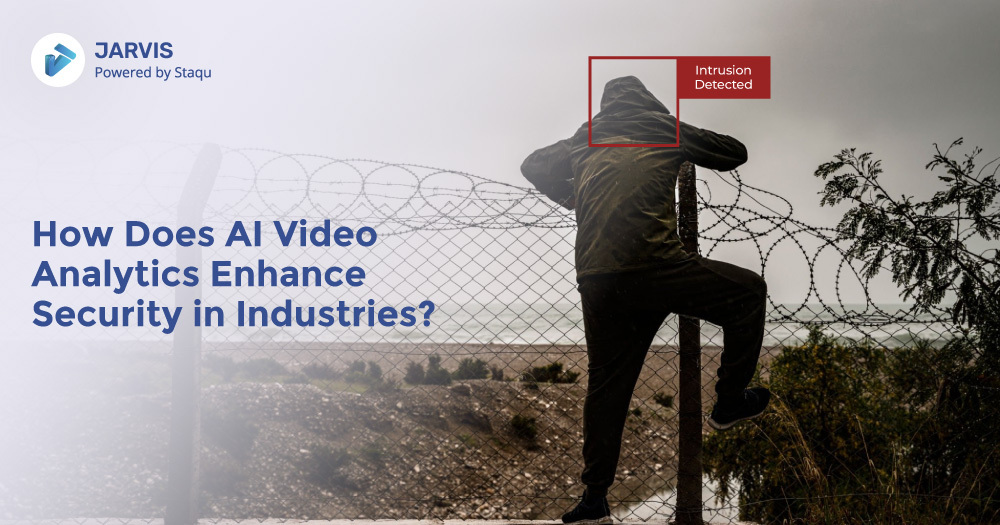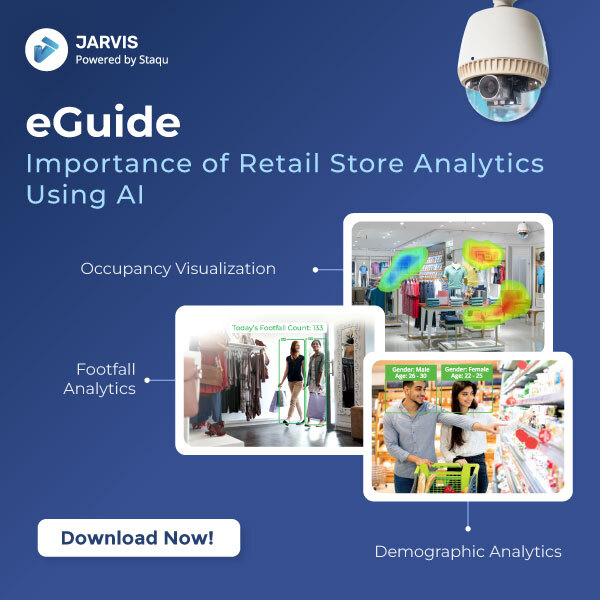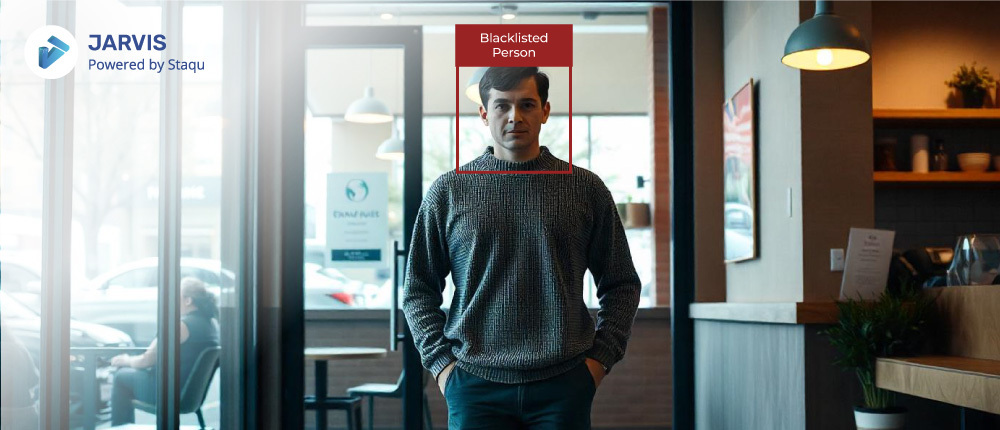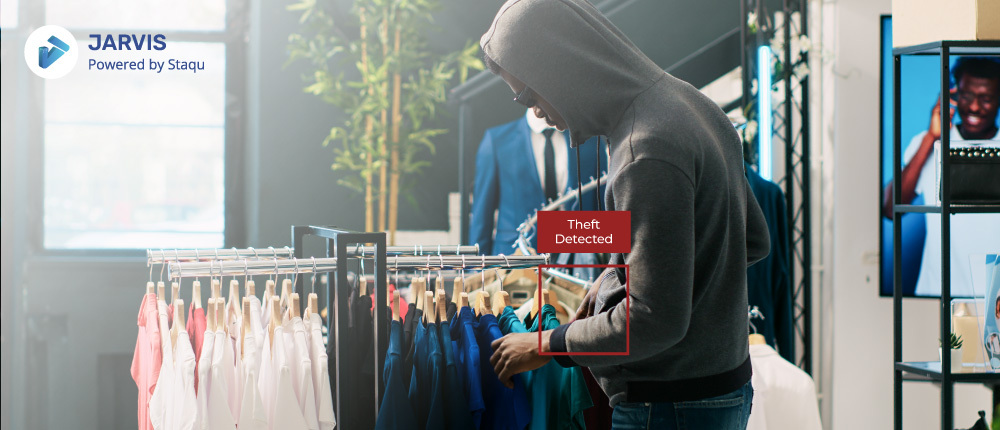How does AI video analytics enhance security in industries?

As industries grow more complex, the need for efficient and reliable security solutions becomes critical. In sectors such as retail, manufacturing, logistics, and energy, safeguarding assets, personnel, and data is a top priority. Traditional security systems, such as CCTV cameras and manual monitoring, have served these sectors for years, but they come with limitations. Human error, fatigue, and the inability to respond in real-time often hinder these systems’ effectiveness.
Enter AI video analytics—an advanced solution that uses artificial intelligence (AI) to enhance security through automated real-time monitoring, behavioral recognition, and threat detection. By transforming static video feeds into actionable insights, AI video analytics addresses many of the shortcomings of traditional systems.
In this piece, we will explore how JARVIS, a leading AI video analytics platform, provides state-of-the-art solutions that enhance security across various industrial sectors, particularly retail. We will also discuss how retail video analytics is reshaping the way stores monitor safety, detect suspicious activity, and streamline security operations.
Key Security Challenges in Industrial Sectors
Industries face unique security challenges, from protecting sensitive data to preventing physical threats like theft and intrusion. Understanding these challenges is essential to appreciate the role of AI video analytics.
- Unauthorized Access
Unauthorized access is a significant challenge in industries that involve sensitive areas like research and development labs, production zones, or inventory storage rooms. For instance, in the retail sector, unauthorized access to stockrooms or back offices can result in financial losses. Monitoring every access point manually is nearly impossible, especially in large facilities. - Theft and Vandalism
Industrial sectors, including retail, often deal with expensive assets, whether it’s physical stock or intellectual property. Theft and vandalism can lead to substantial financial loss. Traditional security measures may capture incidents on camera, but often too late to prevent them. For example, retail video analytics can enhance theft detection by identifying suspicious behavior before a theft occurs, allowing for a proactive response. - Workplace Safety and Accidents
In industries like manufacturing or logistics, workplace safety is a major concern. Accidents happen frequently due to a lack of real-time monitoring of safety compliance. Retail settings may not seem as risky, but slip-and-fall incidents or improper handling of heavy items are common. - Monitoring Large, Complex Sites
Industrial facilities are often large, spread across multiple buildings or levels. For example, big-box retail stores or shopping malls have numerous entry points, blind spots, and high-traffic areas. Monitoring all these spaces manually is both inefficient and ineffective, making real-time AI video analytics essential for comprehensive coverage.
What Is AI Video Analytics and How Does It Work?
- Definition of AI Video Analytics
AI video analytics refers to the use of AI algorithms and machine learning to process and analyze video data. This technology automatically recognizes patterns, detects anomalies, and provides actionable insights in real-time. - How AI Video Analytics Works
AI video analytics starts by ingesting video footage from surveillance cameras installed across the facility. The system uses computer vision and machine learning algorithms to analyze behaviors, movements, and interactions in real-time. With a platform like JARVIS, the AI can identify specific patterns—such as loitering, unauthorized access, or violent behavior—and immediately notify security personnel for swift action.
Additionally, JARVIS seamlessly integrates with existing security infrastructure, making it easier for industries to transition from traditional systems to AI-powered solutions without a complete overhaul.
How AI Video Analytics Enhances Security in Industrial Settings
- Real-Time Threat Detection
JARVIS excels at detecting potential security threats in real time, allowing for quick responses before situations escalate. For example, in a retail environment, JARVIS can identify shoplifting behaviors or detect individuals lingering suspiciously around high-value items. The system can immediately alert store security, who can respond before the theft occurs, minimizing losses.
Similarly, in manufacturing or warehouse settings, JARVIS can detect unauthorized personnel in restricted zones or monitor the handling of hazardous materials. By generating immediate alerts, it allows security teams to intervene in time. - Facial and Object Recognition
One of the core features of JARVIS is its advanced facial and object recognition capabilities. This enables industries to not only track individuals but also detect specific objects of interest. For instance, in the retail sector, facial recognition can help identify known shoplifters or blacklisted individuals attempting to re-enter the premises.
Object recognition, on the other hand, can identify suspicious objects, such as bags left unattended in sensitive areas. In a warehouse setting, JARVIS can track whether employees are using machinery properly, preventing accidents or theft of equipment.
- Perimeter Security and Geofencing
JARVIS enables industries to create virtual perimeters around sensitive zones. For example, in retail stores, back offices where sensitive financial records are stored can be monitored via geofencing. The system immediately raises alarms when unauthorized individuals enter the geofenced zone, ensuring that breaches are detected and reported in real time.
In larger industrial setups, JARVIS can help define zones around manufacturing plants, high-security labs, or chemical storage areas, raising alarms when someone violates these perimeters.
- Suspicious Behavior Detection
JARVIS uses behavioral analysis to detect unusual or suspicious activities, such as loitering, sudden rapid movements, or even heated conversations that could indicate potential violence or theft. In a retail setting, this feature helps detect shoplifters or vandals before they cause damage. In industrial environments, it helps identify suspicious activities that could lead to security or safety risks.
- Intrusion Detection
AI-powered systems like JARVIS provide advanced intrusion detection that goes beyond simple motion detection. By analyzing the behavior of individuals, such as erratic movement near restricted areas, JARVIS identifies whether an actual intrusion is taking place and sends real-time alerts to security teams. - License Plate Recognition (ANPR)
JARVIS’s Automatic Number Plate Recognition (ANPR) technology helps industries monitor vehicles entering and exiting the premises. In the retail sector, ANPR can be used to manage parking lot security, ensuring only authorized vehicles are allowed in restricted areas. In manufacturing, it helps track delivery trucks, ensuring the right vehicles access loading docks at the right time.
Enhancing Workplace Safety with AI Video Analytics
- Monitoring Safety Protocol Compliance
In high-risk environments like manufacturing plants, ensuring safety protocols are followed is essential for worker protection. JARVIS helps monitor whether employees are wearing proper safety gear, such as helmets or gloves, and identifies breaches in protocol, sending instant alerts to supervisors.
In retail environments, this may involve monitoring compliance with COVID-19 safety protocols, ensuring that customers and employees follow masking and distancing guidelines. - Accident Detection and Response
AI video analytics can detect accidents in real-time, such as falls or equipment malfunctions. This is crucial in industrial settings, where timely intervention can prevent further injuries or damage. JARVIS can detect safety breaches and accidents immediately, prompting faster emergency responses.

Download eguide
Data-Driven Security: How AI Video Analytics Improves Decision-Making
- Proactive Security Management
AI video analytics provides industries with data-driven insights into security trends and incidents, allowing for more informed decision-making. For example, retail managers can analyze foot traffic patterns and suspicious activity trends to allocate resources better. Over time, this helps industries become more proactive in their security strategies rather than reacting after incidents occur. - Operational Efficiency
JARVIS reduces the need for constant human surveillance by automating much of the monitoring process. This allows security teams to focus on higher-priority tasks and respond only when alerted to potential incidents. Retailers can reallocate labor costs from constant monitoring to improving customer service, while factories and warehouses can optimize resource management. - Incident Documentation and Investigation
AI systems like JARVIS create detailed logs and records of incidents, including video footage, facial recognition data, and behavioral analyses. This makes post-incident investigations quicker and more accurate. In the retail sector, it provides clear evidence to support claims of shoplifting or vandalism, while in industrial settings, it assists in determining the root causes of safety or security breaches.
Future of AI Video Analytics in Industrial Security
- Emerging Trends and Technologies
The future of AI video analytics lies in predictive AI, which will allow industries to foresee and prevent potential threats before they happen. This includes recognizing patterns in data that suggest a risk and providing pre-emptive alerts. - Expanding Use Cases
AI video analytics is rapidly expanding beyond security, finding applications in areas such as process optimization and quality control. For example, in the retail sector, AI is being used to analyze customer behavior and improve store layouts or promotional displays.
Conclusion
In conclusion, AI video analytics, as provided by JARVIS, is revolutionizing the way industries secure their premises, safeguard employees, and enhance overall operational efficiency. By implementing real-time surveillance, proactive threat detection, and data-driven insights, JARVIS ensures that industries—whether in retail, manufacturing, or logistics—remain one step ahead in protecting their assets and personnel. Embracing AI video analytics is not just a security measure but a strategic investment in future-proofing industrial operations.

